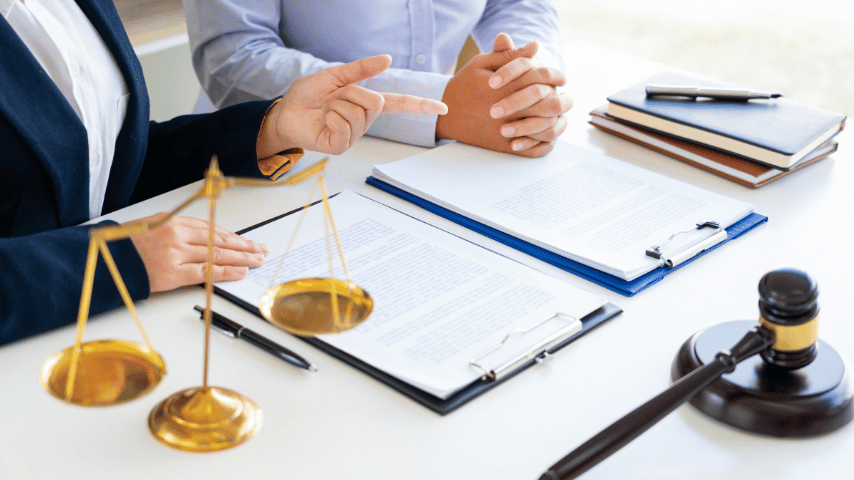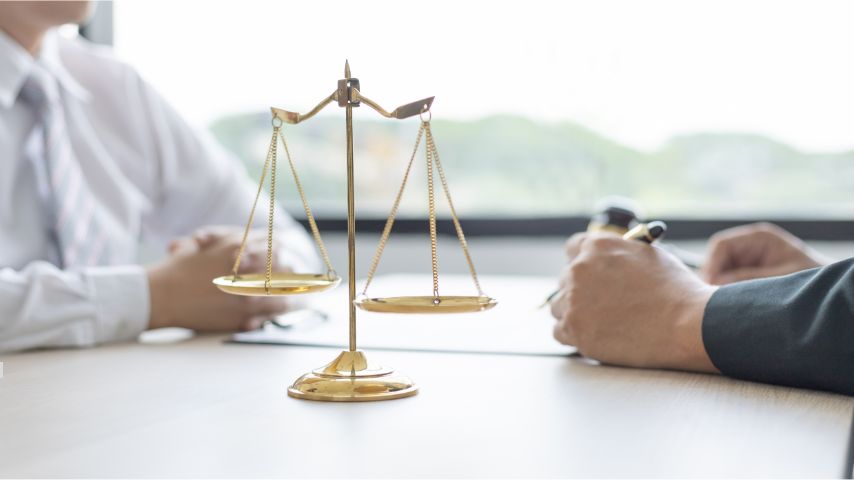Picture this: a courtroom where attorneys wield their verbal swords, judges preside over proceedings, and evidence takes center stage. Before the theatrical performance starts, there’s an important prelude called the pleadings. Like the opening lines of a play, pleadings set the stage, introduce the characters, and outline the conflict. Understanding pleadings parallels grasping a complex novel’s opening chapters, revealing the legal narrative’s essence.
Purpose of Pleadings
Pleadings serve as the essential starting point for any legal dispute. Pleadings are vital legal documents that initiate and define lawsuits. In this section, we’ll explore their core purpose and importance in the legal process.
- Defining the Controversy: The primary role of pleadings is to define and clarify the controversy or legal dispute at hand. When a lawsuit is filed, it is the complaint (or the equivalent initial pleading) that outlines the plaintiff’s grievances or claims against the defendant. This document identifies the key issues, facts, and legal theories that form the basis of the case. The initial explanation of the controversy is necessary for everyone involved to understand the dispute.
- Notice to the Opposing Party: Pleadings also serve as a means to provide notice to the opposing party. This is a fundamental aspect of due process in legal proceedings. Filing a complaint serves the defendant with a copy, which informs them of the claims being made against them. This gives the defendant an opportunity to prepare a response and defend themselves.
- Establishing Discovery: Discovery is the pre-trial process where parties gather evidence, request documents, and depose witnesses. They help both parties efficiently focus their efforts by determining the issues that will be explored during the discovery phase. This can expedite the legal process.
- Shaping Legal Strategy: Pleadings are not just procedural documents; they play a pivotal role in shaping the legal strategy of the parties involved. Attorneys use the information provided in pleadings to develop their arguments and plan their cases. The specificity and accuracy of pleadings can significantly influence the direction of a lawsuit.
Types of Pleadings

The legal world is replete with terminology and documentation that might seem baffling to the uninitiated. Understanding different pleading types is crucial for navigating the justice system. In this section, we will explore the key types of pleadings commonly used in legal cases. We will also be shedding light on their distinct roles and functions.
Complaint
The “Complaint” is the opening act of a legal drama. It is the document that sets the stage for a lawsuit. When someone has a genuine complaint against another person, they can file a complaint to begin legal proceedings. The complaint outlines the specific facts, allegations, and legal theories behind the case. It identifies the defendant, states the cause of action, and requests relief. The complaint is the plaintiff’s way of saying, “This is why I’m taking you to court.”
Answer
Once I file the complaint, I give the defendant an opportunity to respond with an “Answer.” It’s a critical document in the legal process as it shapes the path the lawsuit will take. The defendant can include counterclaims and affirmative defenses if they believe they have valid claims against the plaintiff.
Counterclaim
A “Counterclaim” is a type of pleading filed by the defendant, usually in response to the plaintiff’s complaint. It is a claim made by the defendant against the plaintiff. It asserts that the plaintiff is also liable for damages or other legal remedies. Counterclaims can complicate the legal proceedings as they introduce new issues to be resolved by the court. Someone often uses them strategically to shift the focus of the case.
Cross-Claim
In cases with multiple parties involved, it’s common to see “Cross-Claims” filed. Cross one co-defendant makes – against another co-defendant or a third party involved in the same lawsuit. In a car accident personal injury case, a defendant can file a cross-claim to divide liability.
Third-Party Complaint
A defendant files a “Third-Party Complaint to bring in another party who they believe shares responsibility in a lawsuit. They brought this additional party into the case as a third-party defendant. Third-party complaints often arise where the defendant believes they can shift some or all of the liability onto another party.
These various types of pleadings illustrate the dynamic nature of legal proceedings. Pleadings shape lawsuits, introduce new claims, shift focus, and create a legal process roadmap. Understanding the distinctions between these pleadings is essential for both legal professionals and individuals involved in legal disputes.
Amending Pleadings

As cases progress, changes in circumstances can necessitate amending initial pleadings, a fundamental part of refining claims, defenses, and issues. Amending pleadings is fundamental in refining claims, defenses, and issues within the legal system.
1. Why Amend Pleadings?
Amending pleadings is a critical component of the legal process for several reasons:
- Clarification: As a case progresses, parties may discover additional facts or nuances that were not initially included in the pleadings. Amendments can clarify and provide a more accurate picture of the claims and defenses.
- New Information: Parties may obtain new evidence or information that necessitates changes to their original pleadings. For example, a plaintiff may learn of new witnesses or a defendant may discover an important document that impacts the case.
- Legal Strategy: Attorneys may amend pleadings as part of their legal strategy. They might choose to add or remove claims or defenses to better position themselves in the case.
2. Rules and Procedures for Amending Pleadings
While the legal system allows for the amendment of pleadings, it is not a process free from rules and regulations. Here are some key considerations:
- Timeliness: Parties must adhere to court-imposed deadlines for amending pleadings. These deadlines vary by jurisdiction and case type. It’s essential to be aware of and comply with these deadlines to avoid potential setbacks.
- Court Approval: In many cases, parties must seek court approval to amend their pleadings. The court will evaluate the proposed amendments and determine whether they are permissible. Courts grant permission to amend pleadings unless it would unduly prejudice the opposing party or cause undue delay.
- Opposition: The opposing party has the right to oppose proposed amendments. If there is disagreement, the court will make a decision based on the merits of the arguments presented.
3. Significance of Amending Pleadings
Amending pleadings can have a profound impact on the course of a lawsuit. It can change the issues in dispute, alter the scope of discovery, and influence legal strategy. Here’s why it matters:
- Fairness: Amendments ensure that both parties have a fair opportunity to present their case. They prevent one side from being blindsided by new claims or defenses.
- Efficiency: Amending pleadings can promote the efficient resolution of disputes. Updating claims or defenses reduces the risk of outdated information impacting the case’s outcome.
- Adaptability: The legal system recognizes that cases develop, and amendments provide a mechanism for adapting to changing circumstances or new information.
The Role of Pleadings in the Legal Process
Less glamorous on screen, yet the legal process’s foundation. This section explores pleadings’ pivotal role in shaping the legal process and their critical functions in pursuing justice.
1. Defining the Issues
Pleadings are the documents that define the issues in a legal case. Plaintiff’s complaint presents their perspective and reasons for going to court. The defendant responds with an answer that admits or denies those claims. The specifics outlined in these pleadings set the parameters for the legal dispute. Without this initial step in defining issues, the court lacks direction for further proceedings.
2. Discovery Roadmap
A crucial legal stage is ‘discovery,’ involving evidence collection, document exchange, and depositions. Pleadings play a fundamental role in shaping the scope of discovery. Pleadings outline claims, defenses, and issues, guiding parties in gathering necessary case-supporting information. This helps streamline the discovery process, ensuring that both sides focus their efforts on the relevant aspects of the case.
3. Legal Strategy
Pleadings are not mere formalities; they are strategic documents that shape the legal strategies of the parties involved. Attorneys use the information contained in pleadings to plan their approach. For instance, the specificity of claims in the complaint can help the defendant formulate their defense. The defendant’s response reveals admissions or denials, guiding the plaintiff’s actions. The flow of legal strategy often hinges on the details provided in pleadings.
4. Efficient Resolution and Settlements
Clear and well-drafted pleadings can facilitate the efficient resolution of disputes. Comprehensive understanding encourages parties to explore settlements. Settlements can save time, money, and the emotional toll that lengthy litigation often takes on all parties involved.
5. Trial Preparation
As a case progresses toward trial, pleadings continue to play a pivotal role. They provide a roadmap for the trial, helping the parties and the court understand what issues will be litigated. The content of pleadings heavily influenced trial strategy, including witness selection, evidence presentation, and argument development.
Conclusion
In essence, pleadings are the legal GPS of a case. They set the destination (the issues in dispute) and the route (the legal strategy and discovery process) to reach a resolution. Without this navigational tool, the legal process would be chaotic, inefficient, and unjust.
Pleadings are the foundational building blocks for legal disputes, including complaints, answers, counterclaims, cross-claims, and third-party complaints. They define issues, guide discovery, and shape legal strategies, upholding fairness and due process principles. Holding the principles of fairness and due process.
Comprehending pleadings benefits not only legal experts but anyone in a legal dispute, enabling better navigation of the legal terrain.


